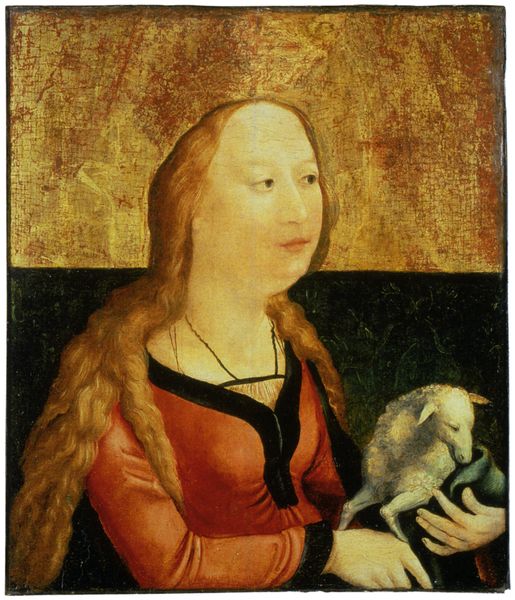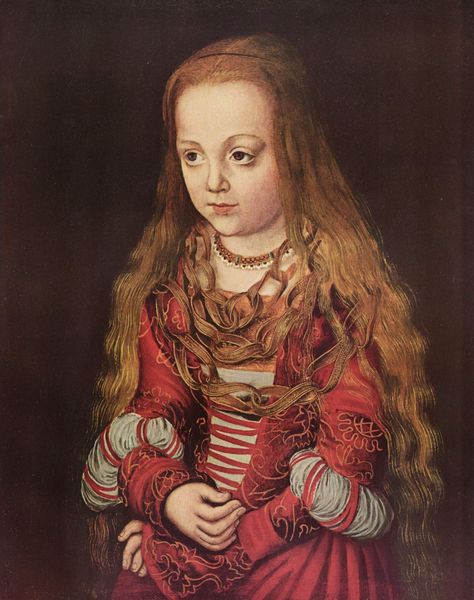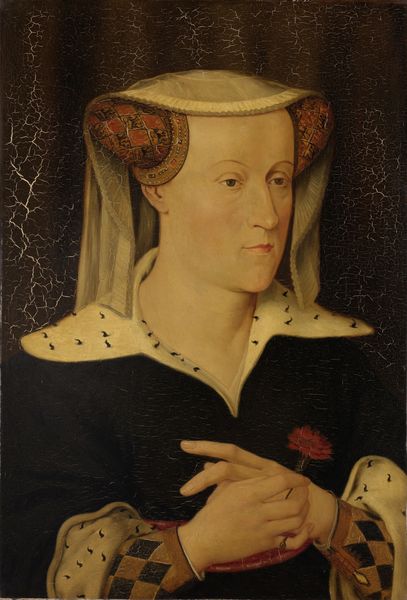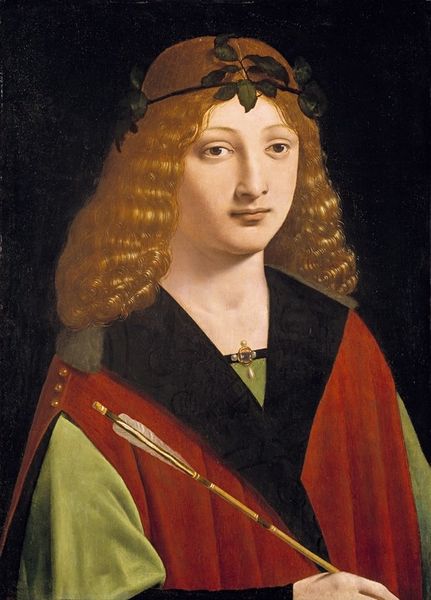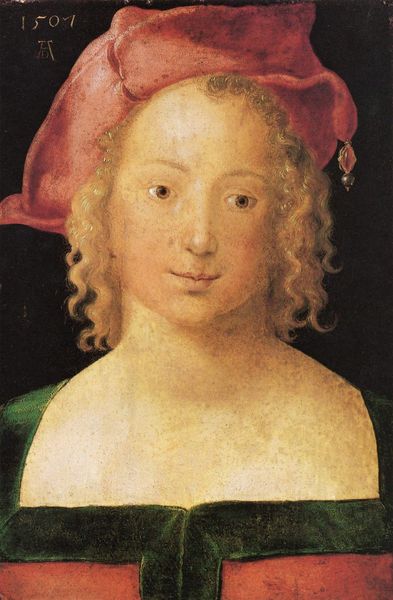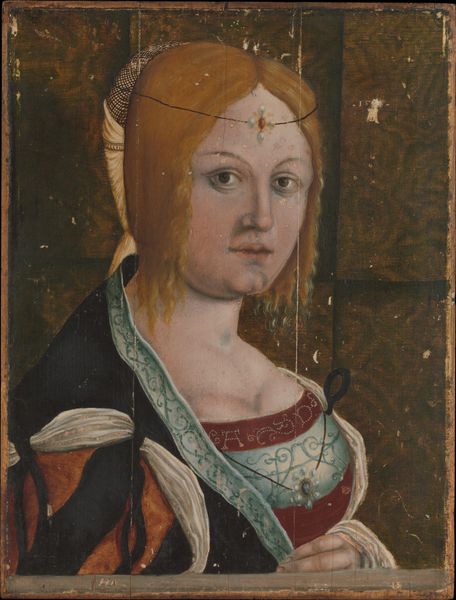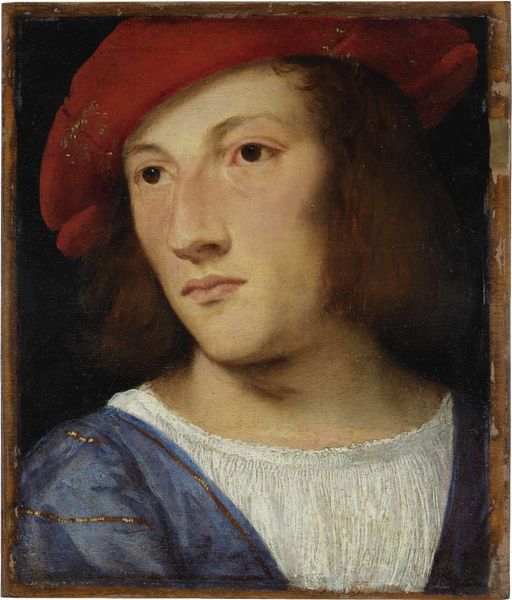
tempera, painting
#
portrait
#
tempera
#
painting
#
history-painting
#
italian-renaissance
Dimensions: 23.5 x 21.5 cm
Copyright: Public domain
Curator: Well, looking at this painting by Hans Holbein the Younger, created around 1516, entitled "Head of a Female Saint," I find it instantly compelling. Editor: I agree; there's something immediately striking about the young woman’s expression. She has this gentle, almost melancholic gaze. What medium did Holbein employ here? Curator: Holbein used tempera on, what seems to me to be, a wooden panel, giving the colors a really particular quality, I would describe it as subdued, but bright. Thinking of 16th-century workshops and Holbein’s context, I am so intrigued about the panel production, the acquisition of the ground pigments and their mixing; so much craft is involved in these tempera paintings. Editor: Absolutely. And this painting, housed at the Kunstmuseum Basel, speaks volumes about the evolving role of female figures within the religious and political landscape of the time. Saints were these complex cultural figures—their images were incredibly powerful tools used in promoting religious devotion. Who do you imagine this Saint could be? Curator: Perhaps Saint Apollonia, patron saint of dentistry given that toothache plagued all in Holbein’s century. I'd love to know more about where Holbein obtained this wooden panel and about the preparation process. I'm curious if the materials were sourced locally, indicating his ties to a community of local craftsmen, or whether they were luxury imports, potentially aligning his artistic practice with more affluent patrons and global trade networks. The surface looks prepared impeccably. Editor: That's a fascinating material analysis! What I find more intriguing is Holbein's choices—how he navigates the line between religious iconography and realistic portraiture. She is obviously idealized with the halo, crown and jewelry, but he clearly had a model, a living young woman, and this grounds her, even humanizes her. Holbein painted many portraits commissioned by Europe’s elites; but here he seems to be giving access to sacredness to a normal citizen, offering a path for common people to seek sanctification by looking at this portrait. Curator: The composition highlights her calm expression and refined style, demonstrating that not only materials and craft but also the way labor manifests can offer social ascension. It certainly does seem he intended this tempera painting to evoke both spirituality and material presence. Editor: Holbein gives viewers access to a specific moment in a specific location while still maintaining access to a broader discourse of religious devotion and power in art history. Curator: Considering how art history typically prioritizes an individual genius artist’s inspiration and innovation, it feels urgent to emphasize the manual dexterity and craft involved in the artistic production of "Head of a Female Saint." Editor: It absolutely does! And by doing so we're enriching the stories we tell about these works for future generations.
Comments
No comments
Be the first to comment and join the conversation on the ultimate creative platform.
